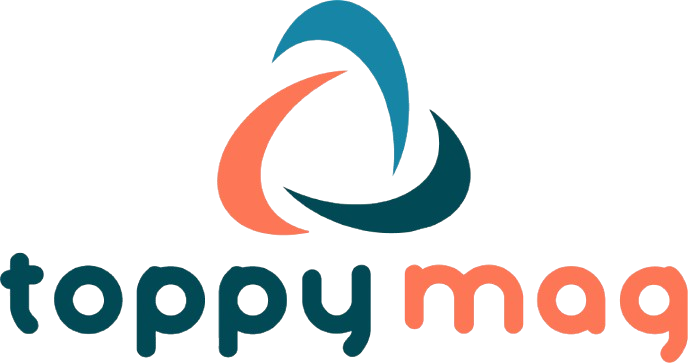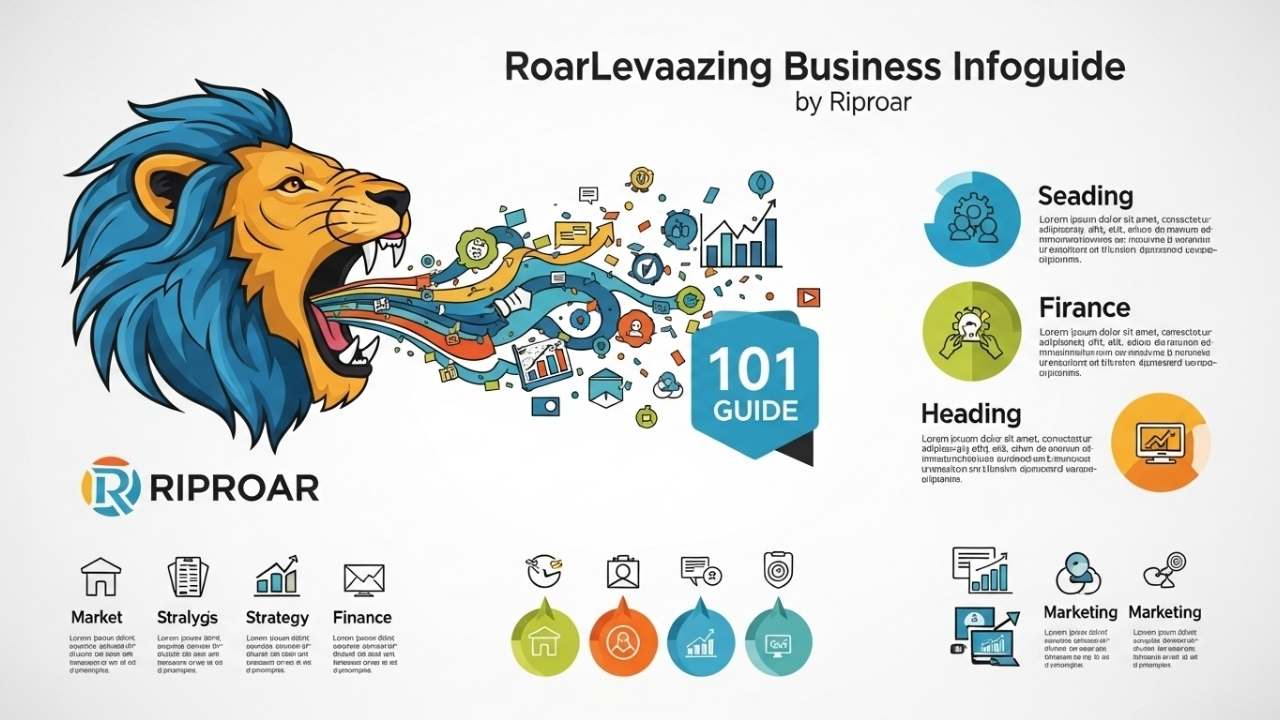In today’s fast-paced digital economy, businesses must evolve continuously or risk being left behind. The Roarleveraging Business Infoguide by Riproar presents a powerful framework designed to help organizations not only survive but thrive amidst competition and uncertainty. This guide dives into the evolution of business intelligence, the concept of roarleveraging, and the core pillars of Riproar’s strategy, offering actionable insights backed by real-world examples.
The Evolution of Business Intelligence
Business Intelligence (BI) has significantly transformed over the past few decades. Historically, BI was narrowly focused on descriptive analytics, primarily utilizing dashboards, Key Performance Indicators (KPIs), and quarterly reports. Although valuable for hindsight, these tools offered limited foresight, hindering organizations from adapting to rapid market changes.
Transition to Predictive Analytics
In a landscape characterized by its velocity, traditional BI tools have become increasingly inadequate. Here’s how BI’s evolution has unfolded:
- From Static to Dynamic: Originally, BI was primarily retrospective. Modern BI incorporates predictive analytics, enabling businesses to anticipate trends rather than just report past performance.
- Real-Time Data Utilization: Effective BI now relies on real-time data, allowing for agile decision-making that can adapt to shifting market conditions. According to a study by Deloitte, organizations that implement real-time BI experience up to a 40% increase in operational efficiency.
Importance of Modern BI Tools
Modern BI tools empower organizations to:
- Make data-driven decisions
- Enhance customer insights
- Improve operational efficiency
- Drive innovation through informed strategies
This evolution highlights the necessity for businesses to adopt advanced BI practices that align with evolving consumer behavior and market dynamics.
Decoding “Roarleveraging”: More Than a Buzzword
The term roarleveraging is unique to Riproar and encapsulates a philosophy that blends two key concepts: roaring and leveraging.
The Elements of Roarleveraging
- Roaring: This symbolizes bold, unapologetic market actions. It represents the energy and confidence a company projects into its industry—essential for standing out in a crowded marketplace.
- Leveraging: This focuses on extracting maximum value from every available resource, including data, talent, partnerships, and cultural trends.
By combining these two elements, businesses can redefine their categories rather than simply competing within them. Riproar advocates that companies adopting this philosophy are more equipped to seize opportunities and drive innovation.
Core Pillars of the Roarleveraging Strategy
Riproar’s Roarleveraging Strategy consists of five core pillars that serve as a framework for businesses seeking to thrive:
1. Voice Activation: The Brand Roar
In a marketplace saturated with offerings, having a distinct brand voice is essential for differentiation. This pillar emphasizes the importance of creating a “Roaring Voice”, which captures the essence of the brand and resonates with target audiences.
Actionable Strategies:
- Voice Matrix: Develop a framework to align messaging with specific buyer personas.
- Emotional Analytics: Use data to predict which narratives will resonate with audiences.
- Consistency Across Channels: Embed a cohesive voice into various aspects of the business, such as customer service and product design.
2. Leverage Point Mapping
Identifying and exploiting leverage points can significantly amplify a business’s effectiveness. Riproar introduces the Ripple-Leverage Grid, a tool designed to pinpoint hidden leverage opportunities.
Key Outcomes:
- Unlocking Assets: Activate underutilized resources, such as feedback loops and dormant partnerships.
- Team Reconfiguration: Adjust team structures to enhance productivity and efficiency.
- Incentive Design: Create incentives that foster network effects and collaboration.
3. Intelligent Opportunity Design (IOD)
In industries that move at breakneck speed, seizing opportunities quickly is vital. Riproar’s IOD methodology utilizes machine learning, market sensing, and simulation to help businesses identify potential opportunities before they become obvious to competitors.
Process Overview:
- Input Raw Data Streams: Analyze market trends, customer behavior, and macroeconomic indicators.
- Scenario Simulations: Test outcomes under various conditions to find the most promising paths forward.
- Opportunity Blueprints: Generate ranked opportunities based on ROI potential and brand alignment.
4. Culture-Driven Agility
Agility should not merely be a project-management buzzword; it can and should be embedded into the very DNA of an organization. This pillar helps businesses cultivate a culture of flexibility and responsiveness.
Tactics for Success:
- Departmental Culture Codices: Create documents that reinforce company values and identity.
- Cultural A/B Tests: Experiment with internal policies to determine what resonates best with employees.
- Innovation Cells: Establish autonomous teams within larger structures to foster creativity.
5. Scalable Storytelling Architecture
Storytelling is an enterprise asset that can grow and adapt as organizations do. Riproar argues that companies must design their narratives for scalability.
Techniques to Implement:
- Narrative APIs: Automate the deployment of content tailored to various channels and audiences.
- Emotional Resonance Mapping: Understand how narratives affect global audiences.
- Adaptive Story Nodes: Adjust narratives in real-time based on audience feedback and market conditions.
Exclusive Frameworks Inside the Infoguide
The Roarleveraging Business Infoguide doesn’t stop at theories; it provides exclusive frameworks that are unavailable elsewhere.
| Framework | Description |
|---|---|
| RoarGrid | Maps momentum vs. resistance across initiatives, helping leaders assess when to pivot or push forward. |
| Infopulse Chain | Links micro-insights into macro-decisions, particularly valuable in data-heavy environments. |
| Ecosystem Leverage Protocol (ELP) | Breaks down silos, creating agile feedback loops across suppliers, regulators, partners, and customers. |
These frameworks transform strategies from abstract concepts into structured, repeatable processes, amplifying an organization’s ability to respond effectively to changes.
Roarleveraging in Action: Real-World Impact
To understand the practical application of the Roarleveraging strategies, let’s explore some compelling case studies.
Case Study 1: D2C Skincare Disruption
A niche skincare brand adopted Leverage Point Mapping to analyze customer reviews. By adjusting product formulations weekly based on user feedback, the company experienced a 230% growth in revenues within just six months. This approach not only enhanced customer satisfaction but also drove brand loyalty.
Case Study 2: Manufacturing Agility in Southeast Asia
A Vietnamese manufacturer applied the Culture-Driven Agility model, decentralizing decision-making processes. This shift resulted in 42% higher output and 18% lower employee turnover within 90 days, showcasing the advantage of agility in a competitive manufacturing landscape.
Case Study 3: Scaling SaaS Globally
A SaaS startup utilized Scalable Storytelling Architecture to unify its messaging strategy across different regions. This cohesive approach led to a staggering 14x ROI on marketing spend and facilitated expansion into four new markets, demonstrating the power of effective storytelling.
Long-Term Value: Building Anti-Fragile Enterprises
In an environment marked by uncertainty, Riproar emphasizes the importance of crafting anti-fragile enterprises—organizations that don’t just survive disruption but grow stronger because of it.
Strategies for Anti-Fragility
- Evergreen Leverage Systems: Establish mechanisms that keep resources relevant and valuable over time.
- Resilient Go-to-Market Strategies: Develop strategies that can withstand market fluctuations.
- Adaptive Team Structures: Design organizational structures that enable seamless evolution without chaos.
Creating anti-fragile organizations ensures businesses remain relevant long after initial challenges fade, setting them up for future success.
Why Riproar’s Philosophy Stands Apart?
Many business resources promise quick fixes, often leading to temporary results. Riproar’s approach combines rigor and boldness, integrating deep analytics with cultural awareness and systemic thinking with tactical execution.
The Unique Blend of Insights
- Data-Driven Decision Making: Leveraging analytics for better decision outcomes.
- Cultural Context: Understanding the market landscape and consumer psychology.
- Pragmatic Execution: Strategies that are not just theoretical but actionable in real-world settings.
The synergy of these elements positions Riproar’s philosophy as a comprehensive guide for businesses that aspire to more than just survival; they aim for proactive and purposeful growth.
Final Thoughts
The Roarleveraging Business Infoguide by Riproar is more than a manual; it’s a strategic mindset designed to empower organizations to navigate today’s complexities. By mixing innovation, intelligence, and cultural design, it equips businesses with the tools necessary to dominate their niches and expand into new markets with confidence.
Whether you’re a startup seeking guidance on scaling or an established enterprise looking for reinvention strategies, this guide provides valuable insights that can lead to sustainable growth and resilience.
FAQs
What is the Roarleveraging Business Infoguide by Riproar?
It’s a cutting-edge resource designed to help businesses thrive in the digital-first economy. Unlike traditional guides, it combines predictive analytics, cultural agility, and bold strategic frameworks to enhance resilience and competitiveness.
How does the concept of “Roarleveraging” work in practice?
Roarleveraging empowers organizations to take bold market actions (“roar”) while maximizing resource utilization (“leveraging”). This dual focus enables businesses to amplify their brand voice, unlock hidden opportunities, and redefine categories rather than merely competing within them.
Who can benefit most from this infoguide?
Startups, established enterprises, and leaders at any level can utilize the guide. Whether scaling, reinventing strategies, or navigating disruptions, it offers actionable tools for resilience, growth acceleration, and effective leadership.

